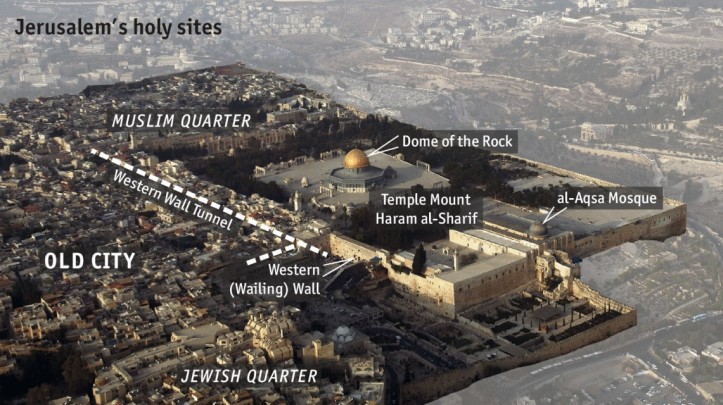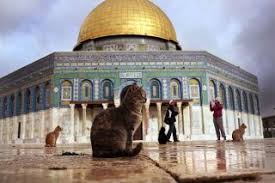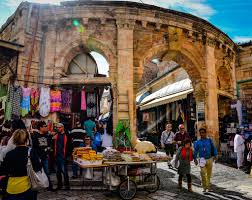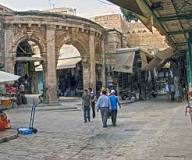ISRAEL THE ” HOLY LAND ”

Jerusalem, Israel’s capital (population 788,100), has stood at the center of the Jewish people‟s national and spiritual life since King David made it the capital of his kingdom some 3000 years ago. Today it is a flourishing, vibrant metropolis, the seat of the government and Israel‟s largest city.
Tel Aviv-Yafo (population 404,300), which was founded in 1909 as the first Jewish city in modern times, is today the center of the country‟s industrial, commercial, financial and cultural life.Haifa (population 268,200), a known coastal town since ancient times, is a major Mediterranean port and the industrial and commercial center of northern Israel.
Be’er Sheva (population 195,400), named in the Bible as an encampment of the patriarchs, is today the largest urban center in the south. It provides administrative, economic, health, education and cultural services for the entire southern region.

JERUSALEM
Holy to Jews, Christians and Muslims, Jerusalem’s Old City is one of the world’s foremost pilgrimage destinations. A repository of sacred buildings and relics, it is a place where the oft-abused descriptor ‘living history’ really does apply – here you can walk in the footsteps of prophets, pray in buildings constructed by order of caliphs and kings, and overnight in hospices where Crusaders and cardinals have slumbered. The soundtrack is of church bells, the muezzin’s call and the shofar (ram’s horn), and the streets smell of everything from church incense to the heady aromas of the spice souq (market). It’s a sensory and spiritual experience unlike any other.
There’s plenty to see outside the Old City, too, including the hugely impressive Israel Museum and the powerful Yad Vashem Holocaust memorial. They, together with the Old City’s manifest attractions, make Jerusalem the numberone tourist destination in Israel for good reason.
Best time of year to go: May or Sep-Oct.
Best festival: the Old City is illuminated at night during June‟s Light in Jerusalem festival.
Neighborhoods & sights Al-Haram ash Sharif/Temple Mount
Few places on earth are as religiously significant as Al-Haram ash Sharif/Temple Mount. Located on the southeastern edge of the Old City, this elevated Cyprus-planted plaza is revered by Jews as the location of the First and Second Temples, and is also home to two of Islam‟s most sacred buildings: the Al-Aqsa Mosque and the shrine known as the Dome of the Rock. Security officers ensure that entry to the mosque is for Muslims only, but every visitor can wander around the plaza and admire the perfect proportions, tile-encrusted exterior walls and glittering gold roof of the shrine.
The Dome of the Rock is one of Jerusalem’s most recognizable and important sites.
Christian Quarter, Old City
 There haven‟t been too many changes in this ancient part of the city since Helena, mother of Roman Emperor Constantine, came to Jerusalem in 326 AD, looking for Christ‟s crucifixion site. The signature sound of the narrow streets, home to 4500 residents drawn from 20 different Christian denominations, is still the sonorous chime of church bells; the defining smell is the heady whiff of incense crossed with the mustiness of millennia. The quarter‟s greatest attraction is Christendom‟s most holy structure, the Church of the Holy Sepulcher, built at Helena‟s behest to sanctify the place where she – and subsequently billions of Christians – believed Christ was crucified and entombed.
There haven‟t been too many changes in this ancient part of the city since Helena, mother of Roman Emperor Constantine, came to Jerusalem in 326 AD, looking for Christ‟s crucifixion site. The signature sound of the narrow streets, home to 4500 residents drawn from 20 different Christian denominations, is still the sonorous chime of church bells; the defining smell is the heady whiff of incense crossed with the mustiness of millennia. The quarter‟s greatest attraction is Christendom‟s most holy structure, the Church of the Holy Sepulcher, built at Helena‟s behest to sanctify the place where she – and subsequently billions of Christians – believed Christ was crucified and entombed.
The Church of the Holy Sepulchre is said to be the site of Jesus’ crucifixion.
Jewish Quarter, Old City
The massive stone blocks of the Western Wall (Kotel) are Judaism‟s most holy site and an important place of worship – Jews believe the wall once supported the Second Temple, destroyed by the Romans in 70 AD. Nearby, the Jerusalem Archaeological Park & Davidson Centre offers a fascinating peek into the history of the Temple Mount and its surrounds. Another important archaeological site,
the City of David, is located just outside Dung Gate, on the southern edge of the quarter.
The Western Wall is sacred to Jews.
Muslim Quarter, Old City
A microcosm of the Middle East, this colorful quarter starts at bustling Damascus Gate on the edge of Arab East Jerusalem and is centered along the narrow mercantile strips of Al Wad Rd and Souq Khan al-Zeit St. Purchase aromatic spices, sample delectable Arabic sweets, and admire the handsome though sadly deteriorating facades of palaces, tombs and caravanserais built by the Mamluk rulers of the city between the 13th and 16th centuries.
Atmospheric streets lined with stalls are a big draw in the Muslim Quarter.
Armenian Quarter, Old City
The Armenian Quarter‟s 1500 residents are the only remaining representatives of a community that has been in Jerusalem for nearly two millennia. Visitors can join them for a service in the 12th-century St James‟ (Jacques‟) Cathedral, and afterwards head to the Citadel (Tower of David) at Jaffa Gate, which is now home to the impressive Museum of the History of Jerusalem.
Beautiful ceramic tiles can be seen in many buildings in the Armenian Quarter.

Mahane Yehuda Market, City Centre
As well as being crammed with fresh fruit, olives, nuts and vegetables, open-air Mahane Yehuda Market is also a good place to source spices, tea, cheese, dried fruit, tahini, bread and pastries. Watch the daytime action from one of the cafes and return after sunset when the market hosts a hipster bar scene.
Mouthwatering breads and pastries are just two of the tempting food options on offer at Mahane Yehuda Market.
Israel Museum, Givat Ram
You‟ll need to devote at least half a day to exploring the magnificent Israel Museum. Marvel at the treasures in the Archaeology wing, be fascinated by the displays in the Jewish Art & Life wing, wander past sculptures in the Isamu Noguchi-designed art garden, and come face to face with the famed Dead Sea Scrolls in the purpose-built Shrine of the Book pavilion.
Marvel at the mosaics in the excellent Israel Museum.
Yad Vashem, Har Hazikaron
Spread over 16 pine-scented hectares of the Jerusalem forest on the western edge of city, Yad Vashem is a moving and powerful memorial to the six million Jews killed in the Holocaust. Yad Vashem means „A Memorial and a Name‟ and one of the highlights here is the Hall of Names, where the personal details of millions of victims are recorded. Another highlight is the Children‟s Memorial, a dimly lit underground cavern containing a solitary flame reflected infinitely by hundreds of mirrors.
** For Tour Packages Contact **
** Diploma In Tourism Administration **
** B.Voc In Tourism Degree **
** Learn Travel & Tourism **
** Travel & Tourism Courses **
SEF Institute Of Travel & Tourism
** http://www.sefinst.com **
** Tel : +91-9082456215 | 90827373176 **